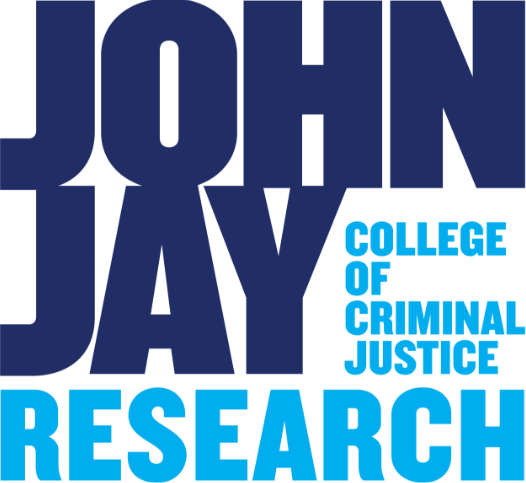The 21st
Despite an increasingly
Century
divided nation, there’s more
Immigrant
to the immigration conversation than fear
Experience
There is arguably no issue more polarizing in American politics today than immigration. The United States is becoming more diverse every year as immigrants from around the world continue to flock to this country to seek a better life, whether that means new employment opportunities and a higher standard of living, or an escape from war and violence back home. With them they have brought skills, traditions, art, religion, and a variety of other contributions to the fabric of American culture. Complicating this picture are deep anti-immigrant sentiments among some Americans, who blame immigrants for contributing to economic hardship and other social ills. The result is a poignant and complex subject ripe for scholarship thanks to its ramifications for future generations of Americans.
Spreading Moral Panic
Jamie Longazel is an associate professor of political science who wrote his recent book, Undocumented Fears: Immigration and the Politics of Divide and Conquer in Hazleton, PA, a year before the election of Donald Trump and the wave of anti-immigrant rhetoric and policy that followed. Longazel’s book documents a series of events that began in 2006, but more than a decade later his case study of Hazleton has become one of the most prescient and relevant portraits of Trump’s America.
In 2006, two undocumented Latino men allegedly murdered a white resident of the Pennsylvania town of Hazleton. Though the men were never convicted of the crime, then Hazleton mayor Lou Barletta, now a Pennsylvania congressman closely aligned with Trump, seized on this event to create what Longazel called a “moral panic.” “He was hyping up fears about undocumented people committing crimes and draining resources,” said Longazel, “and what happened is the native-born folks, who are third or fourth generation European immigrants, began blaming Latinos for all the city’s problems rather than paying attention to the economic circumstances.”
Like countless towns and cities across America, Hazleton was hit by a wave of economic hardship during recent years as manufacturing jobs have disappeared, making it difficult for the working class population to earn a decent living. Accompanying this trend has been an influx of Latino immigrants, shifting the population of the small city from 95 percent white in 2000 to around 50 percent Latino today. In 2006, Barletta passed the Illegal Immigration Relief Act, intended to punish businesses for employing undocumented workers, among other changes. Although the law was later ruled unconstitutional, its effects on Hazleton remained significant, including anti-immigrant rallies in Hazleton.
While Longazel intended to study a fairly novel phenomenon in his home town, the same phenomenon is playing out in real time on a national scale today. “I’m making the case that it’s not just the racism, but racism as it intersects with class,” he said. Undocumented Fears continues to receive media attention as people look to the events in Hazleton to better explain the rash of anti-immigrant feeling spreading across the country.
The nativist turn in national discourse, accompanied by anti-immigrant policies such as zero-tolerance and an increasingly stringent approach to interior enforcement, has presented significant challenges for the many researchers, practitioners and advocates working to improve living conditions for America’s immigrant communities.
Human Trafficking
For John Jay research professor Meredith Dank, one of the most pressing and relevant of these challenges is the effect of these policies on the fight against human trafficking. Labor trafficking, while often overshadowed by the media attention given to sex trafficking, is a growing problem in the US, and one that is particularly exacerbated by current immigration enforcement policy. Dank is planning a Fall 2018 forum to raise awareness and educate relevant professionals including journalists, immigrant advocates, and policy-makers about challenges faced by immigrant communities. “Children and parents are being torn apart,” Dank said, “and what we find is that immigrant communities are living in fear of being deported, which puts them in an even more vulnerable position to employers who might take advantage of them.”
“There are employers who are very aware of the vulnerability and desperation of people to work and support their families, and they take advantage of that,” she said. “They might be underpaid or not paid at all, they might be placed in unlivable conditions, they might be threatened or harmed physically, sexually, emotionally… and [in the U.S.] just the threat and fear of deportation is enough for many individuals to remain in these situations.”
Sounds of Nueva York
With national conversation often focused on negative perceptions of immigrants, stories of their rich cultural contributions are often lost. Ben Lapidus is an associate professor and chair of the art and music department at John Jay, and one primary focus of his research is music as a product of immigration and other social forces.
Lapidus is the recent recipient of a grant from John Jay’s Office for the Advancement of Research for his project, “The Sound of Nueva York: How an American City and its Residents Shaped an International Sound from 1940-1990.” This project also received funding from the National Endowment for the Humanities, and he is currently writing a book with the same title.
“I’ve been performing music professionally in NYC for 30 years, playing lots of music – Latin, Caribbean, jazz – and I’ve had a lot of opportunities to speak with musicians over the years and to ask questions about who they are and what their story is,” said Lapidus. Through these musical connections, Lapidus conducts oral history interviews with musicians from various backgrounds across the city, and analyzes their recordings from a musicological perspective. Through this research, he has come to define a new “international sound,” the subject of his forthcoming book.
The traditional narrative of Latin and Caribbean music usually focuses on how various immigrant groups brought their musical traditions to the United States. These genres are often thought of as distinct or self-contained, but what Lapidus has discovered in the course of his research is that once these various immigrant groups frequented the same venues in New York City, many established a codified sound, robust musical education, and even created new instruments. This collaboration among immigrants from different countries led to innovations in the style and form of Latin and Caribbean jazz that eventually became the “international sound” that Lapidus articulates in his research. In fact, New York City immigrants took elements of this new sound back to their home countries, resulting in a thriving cross-cultural exchange of music that continues today.
“It really is a New York story,” he said. “There was a lot of back and forth between New York and Cuba, Puerto Rico, and other places, and at a certain point what happened is New York started to take on its own flavor. Musicians took certain musical elements and elevated them in new ways, and this, combined with the fact that there are a lot of nightclubs, concert halls, and dance halls in all five boroughs, created an atmosphere where innovation and adaptation could happen.”
Controversy surrounding immigration politics in the U.S. threatens to overshadow the reality that the immigrant experience is nuanced, complex, and fraught with both positive and negative elements that continue to impact American life and culture in new and ever-changing ways. John Jay faculty scholarship continues to further the conversation and shine a light on some of the most important aspects of immigration studies.
Photos: Herika Martinez/AFP/Getty Images (header), Pap Studio (portrait)

